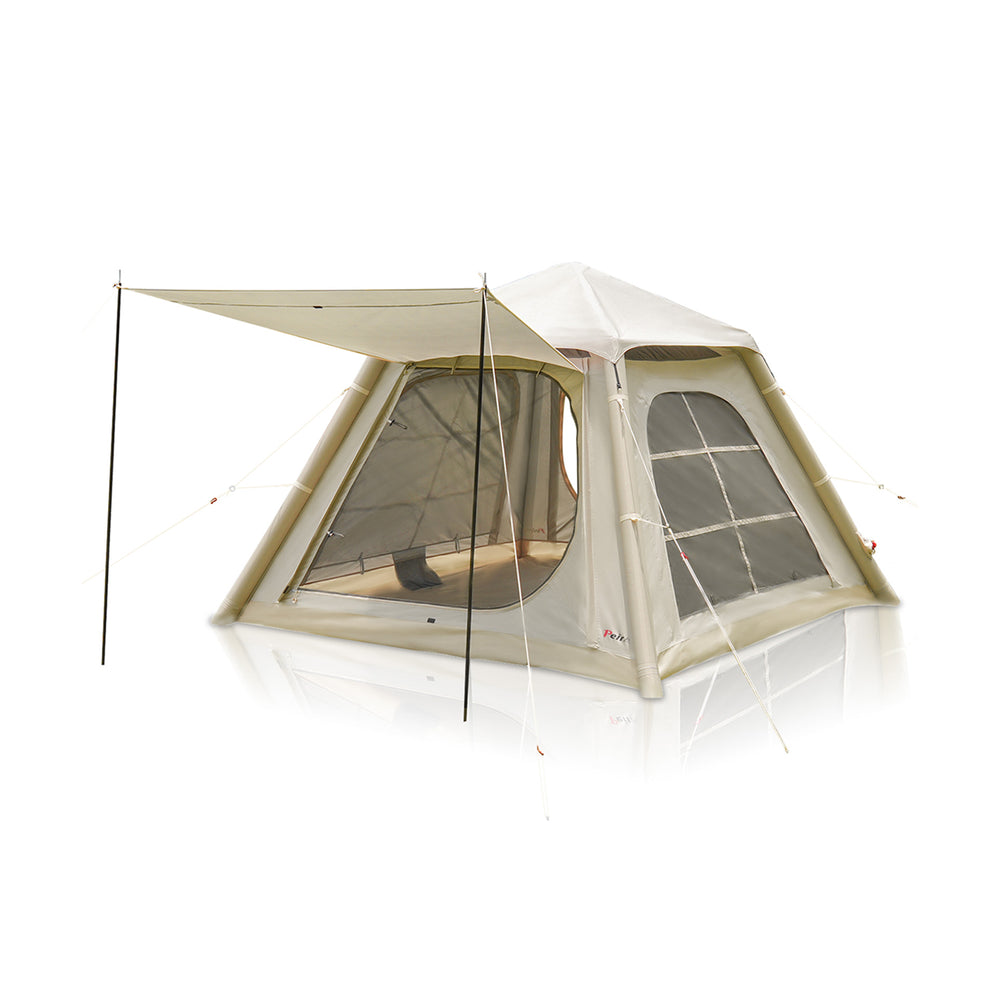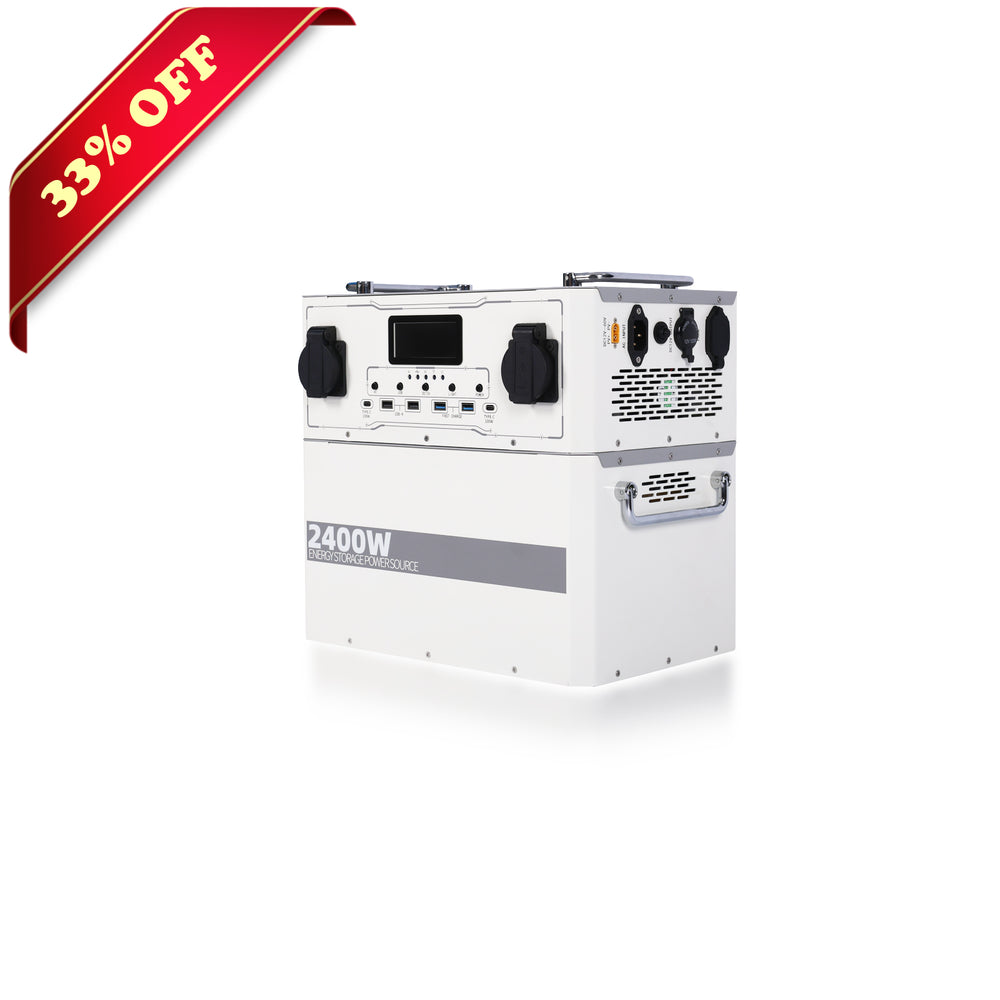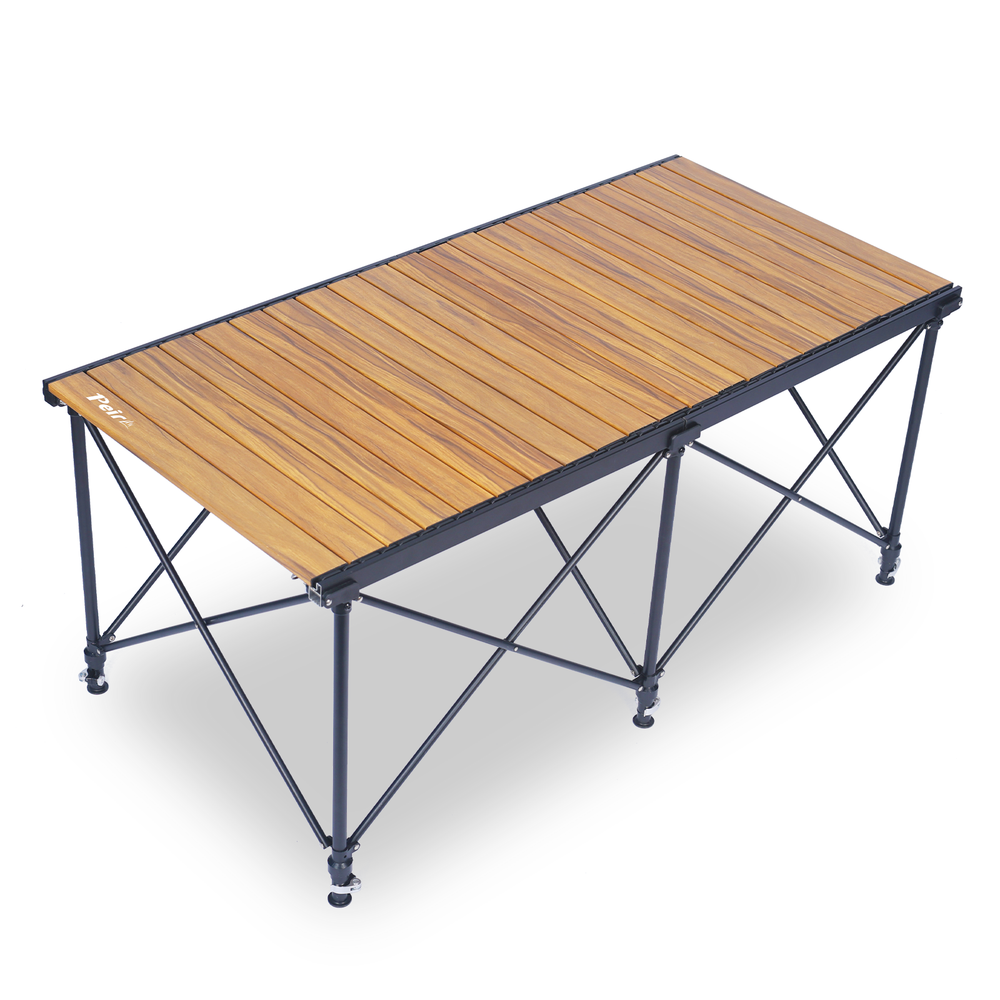Condensation happens when warm air comes into contact with cold surfaces, causing water vapor to transform into droplets of water. On chilly nights, as a family stays warm inside a tent, condensation naturally forms. A tent’s rainfly may protect against rain, but condensation can still accumulate underneath it, dripping through the mesh materials.
While thicker canvas tents offer an additional layer of protection, condensation can still occur occasionally, particularly if you’re not careful. Rainy weather and colder nights tend to generate condensation, even in the most resilient tents.
Now, let’s explore what you can do to manage condensation inside your tent and stay dry.
8 Ways to Prevent Condensation in Your Tent
Managing condensation inside your tent largely revolves around controlling air circulation. Here are some useful tips to keep moisture at bay and maintain a dry interior:
1. Set Up on a Dry Site with Protective Trees
Trees are excellent at providing shade, but they also help maintain a layer of warm air beneath their branches. While this might seem counterintuitive for preventing condensation, it helps warm the top of your tent (or rainfly) as well, which means the moisture will condense on the branches, not on your tent.
2. Stake Out Your Tent Properly
Always make sure your tent is staked out tightly and securely. Tensioning the tent’s materials, whether it’s nylon or canvas, creates more space inside and allows for better airflow.
3. Hang Wet Items Outside
Avoid bringing damp or wet items into the tent. This includes rainjackets, shoes, or beach towels that may have been used earlier. Your breath already contributes to the moisture in the tent, so adding more wet items will only worsen the problem. Instead, hang your wet items outside and change into dry clothes.
4. Use a Dehumidifier
For those with more permanent canvas tents, a dehumidifier can work wonders in controlling condensation. Simply place it in a corner of the tent and let it collect moisture before it can build up.
5. Avoid Cooking Inside
It's best to avoid cooking inside your tent. If you have a tent stove for warmth, that’s great, but keep your cooking to an outdoor space if possible. Also, remember that the warmer the tent, the more moisture will evaporate, contributing to condensation.
6. Add a Rainfly
A rainfly adds an extra layer between the warm air inside the tent and the cooler outside air. This extra barrier helps prevent condensation from forming on the tent’s top. Not only do rainflies keep your tent clean, but they also provide an insulative layer that reduces heat inside during hot summer days. And no, rainflies aren’t just for backpacking tents—bell tents also offer roof covers!
7. Choose a Tent with Good Ventilation
Proper ventilation plays a huge role in reducing condensation. Large doors (and even double doors) with mesh panels provide airflow, which helps cool the interior temperature. Positioning the main entrance toward the wind also optimizes air circulation.
In addition to doors, some tents feature built-in ventilation options. For example, canvas tents offer mesh and canvas wall windows that can be rolled down for added airflow. We recommend keeping the windows cracked slightly, even while it’s raining, to allow the tent to breathe.
Each of our bell tents also has multiple ceiling ventilation points at the peak to enhance airflow.
8. Pick a Tall Tent
Height matters when it comes to condensation. The closer the roof is to your breath, the quicker condensation will build up. Opt for a tent with more vertical space and a higher peak. This extra room will make your camping experience more comfortable and help reduce condensation.
How to Manage Tent Condensation
Despite your best efforts, condensation can still form. Here are a few strategies to deal with it:
1. Use Liners
Tent liners act as an internal shield, capturing drips and directing moisture to the floor. This turns a single-wall tent into a double-wall tent, providing an additional barrier against condensation.
2. Tent Stoves
Portable wood stoves are a great tool for drying out a tent in colder weather. The stove’s heat warms the air inside, allowing it to hold more moisture, which then evaporates the condensation. Plus, the stove can help dry wet gear inside the tent, further reducing moisture levels.
3. Drying with a Cloth
Quick wipe-downs with a microfiber towel or cloth can help manage condensation. Simply wipe the inside of the tent to remove excess moisture and prevent it from dripping onto your gear.
Why Is Tent Condensation a Problem?
Condensation can range from a minor inconvenience to a serious issue that could ruin your trip. Here’s why it’s important to manage it effectively:
-
Minor inconvenience: A light mist of moisture on the tent walls may not seem like much, but brushing against it could soak your clothes or sleeping bag.
-
Major annoyance: When condensation accumulates heavily, rainstorms or strong winds can shake loose the droplets, creating a damp, misty environment inside the tent.
In severe cases, the interior of the tent can become soaked, leaving your gear damp and your morale low. Fortunately, proper site selection, ventilation, and condensation management techniques can prevent this scenario.
Effective Solutions for Tent Condensation
To address both sides of the condensation equation, here’s what you can do:
-
Control warm, moist air inside: Improve airflow and ventilation to move moisture out of the tent.
-
Handle cold air outside: Prevent warm air inside from coming into contact with the cooler tent canopy by using liners or enhancing airflow.












 Peirhw Inflatable House Tent - Starry Night Love
Peirhw Inflatable House Tent - Starry Night Love
 Peirhw Glamping Tents - Friendship Castle
Peirhw Glamping Tents - Friendship Castle
 Peirhw Inflatable Canopy Tent - Adventurer
Peirhw Inflatable Canopy Tent - Adventurer



 Peirhw Portable Air Conditioner
Peirhw Portable Air Conditioner
 【Advance Sale】Peirhw Portable Power Station 2400W
【Advance Sale】Peirhw Portable Power Station 2400W
 【Advance Sale】Peirhw Portable Power Station 600W
【Advance Sale】Peirhw Portable Power Station 600W





 Peirhw Self Inflating Sleeping Pad
Peirhw Self Inflating Sleeping Pad
 Peirhw Air Mattress (8" Queen Type)
Peirhw Air Mattress (8" Queen Type)
 Peirhw Camping Sleeping Bag
Peirhw Camping Sleeping Bag


 Peirhw Butterfly-shaped Canopy for Camping
Peirhw Butterfly-shaped Canopy for Camping
 Peirhw Camping Waterproof Canopy (Cannot be Purchased Separately)
Peirhw Camping Waterproof Canopy (Cannot be Purchased Separately)


 Peirhw Outdoor Folding Chairs
Peirhw Outdoor Folding Chairs
 Peirhw Folding Camping Table
Peirhw Folding Camping Table












